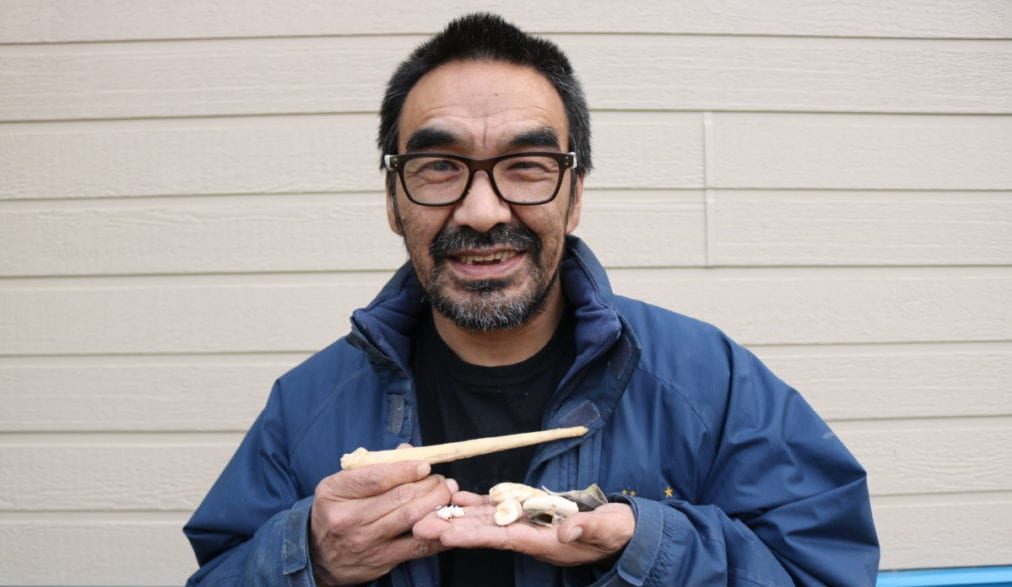Artist Greg Morgan estimates that Covid-19 has cost him 75 per cent of his normal income.

Rajnesh Sharma/NNSL photos
“I’m having a difficult time to sell … It’s very hard to sell carvings right now over Covid-19,” he said, adding that money earned from his artwork helps support his wife, five daughters and his grandson. “Sometimes I sell (carvings) very cheap here in Iqaluit, even though it’s a very nice carving … it is very difficult for me to support my family. We have to eat, too.”
Morgan gave an example of one of his carving that would have usually fetched $1,500 in the past selling for just $600 through a recent private online order placed during the Covid period.
Even though sales are sparse, Morgan said he’s continuing to make more carvings and jewelry and stockpiling it in hopes that better times return. He’s also been gathering raw materials such as muskox horn, narwhal tusk and caribou antlers for future use.
He said this is the toughest stretch he has ever endured as a working professional.
A carver for 27 years and a formally trained jewelry-maker for over a decade, Morgan relies on a number of businesses in the city to sell his art, including the Nunatta Sunakkutaangit Museum.

Jessica Kotierk, the museum’s manager and curator, said the tourist attraction was closed due to the pandemic as of March 16. Art sales then essentially ground to a halt.
The museum’s staff began posting more and more gift shop merchandise on Facebook and Instagram after closing in March to try to build some sales momentum, but it wasn’t without a few hiccups.
“We don’t have like an e-commerce component of our museum website so it’s a little bit just confusing,” Kotierk said. “It takes some time to get people used to thinking that we could ship things to them.”
It’s only made a modest dent in the museum gift shop’s existing inventory, which is comprised of carvings, prints, CDs, books and photographs by dozens of artists.
“We haven’t been able to buy as frequently and as often because we don’t have space. We’re hoping to sell things before we can replace it,” she said.
The site reopened by appointment as of July 7 and there’s been a modest rebound in sales, according to Kotierk.
One to 10 people per day pass through the site, with a maximum of five at a time.
“Now that we’ve been opening we’ve been selling some pieces here and there and I get that shoppers high when somebody buys something that I know is beautiful and they’re happy to have it, it’s exciting again,” Kotierk said.
“I’m really looking forward to being able to have more people come in to buy the beautiful things.”
Morgan is looking forward to better days. He applied for income support but he said he was told the amount of money he made still exceeded the program’s threshold.
“It’s frustrating sometimes … but I’ll survive,” he said.
He also applied for the Government of Nunavut’s Public Art Initiative, which offers select artists $5,000 to $50,000 in assistance. The application deadline for that program closed on Sept. 1.